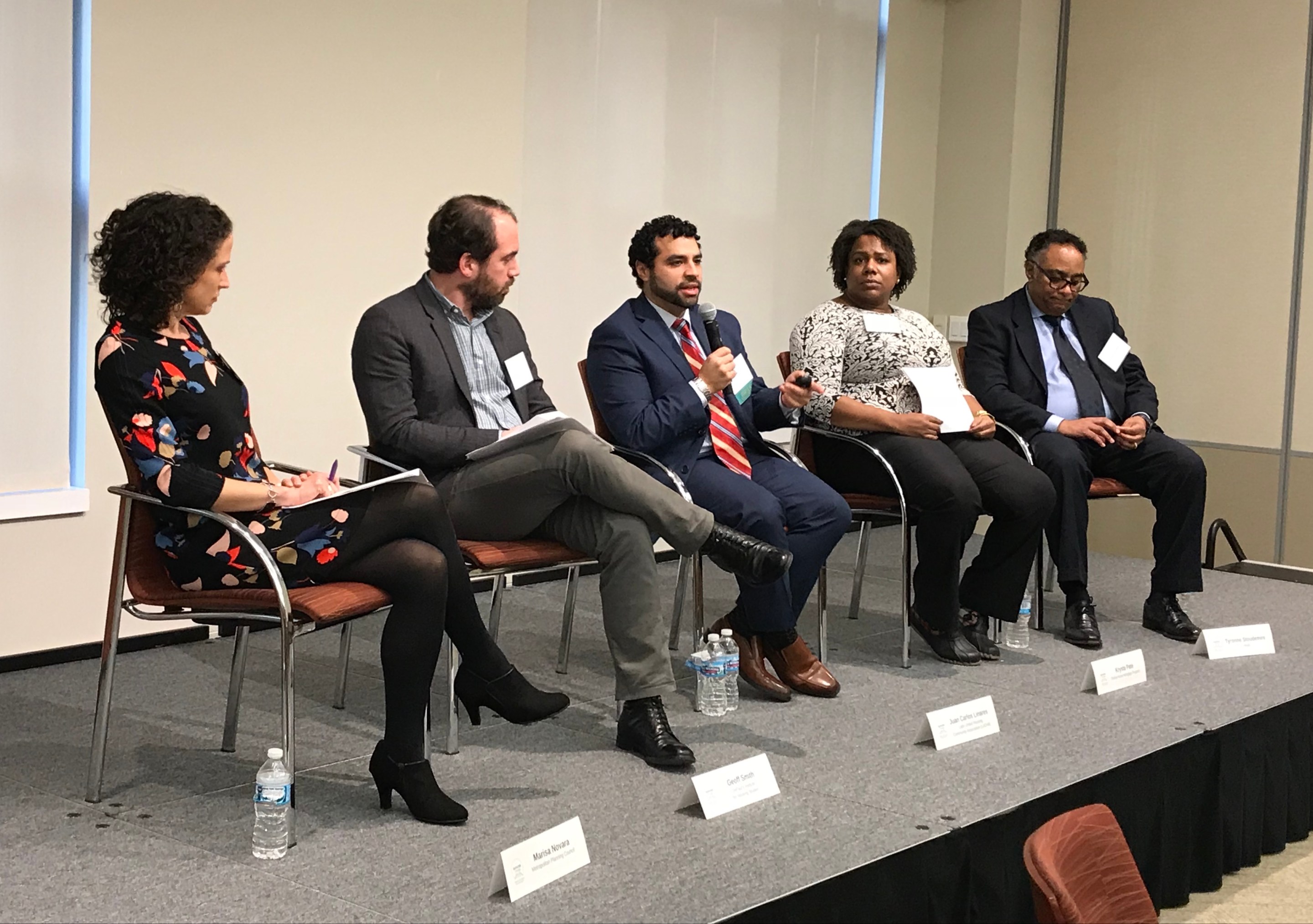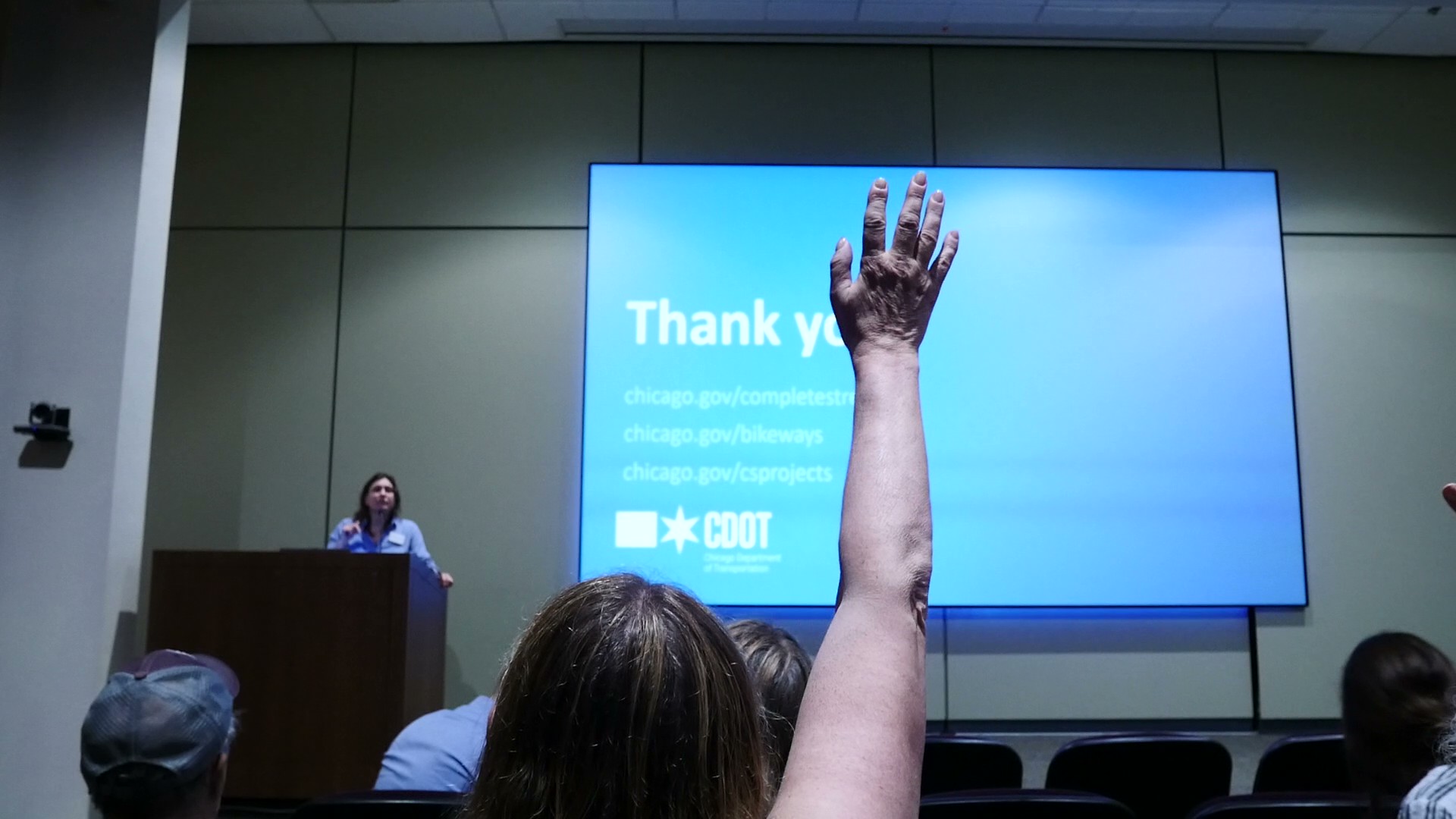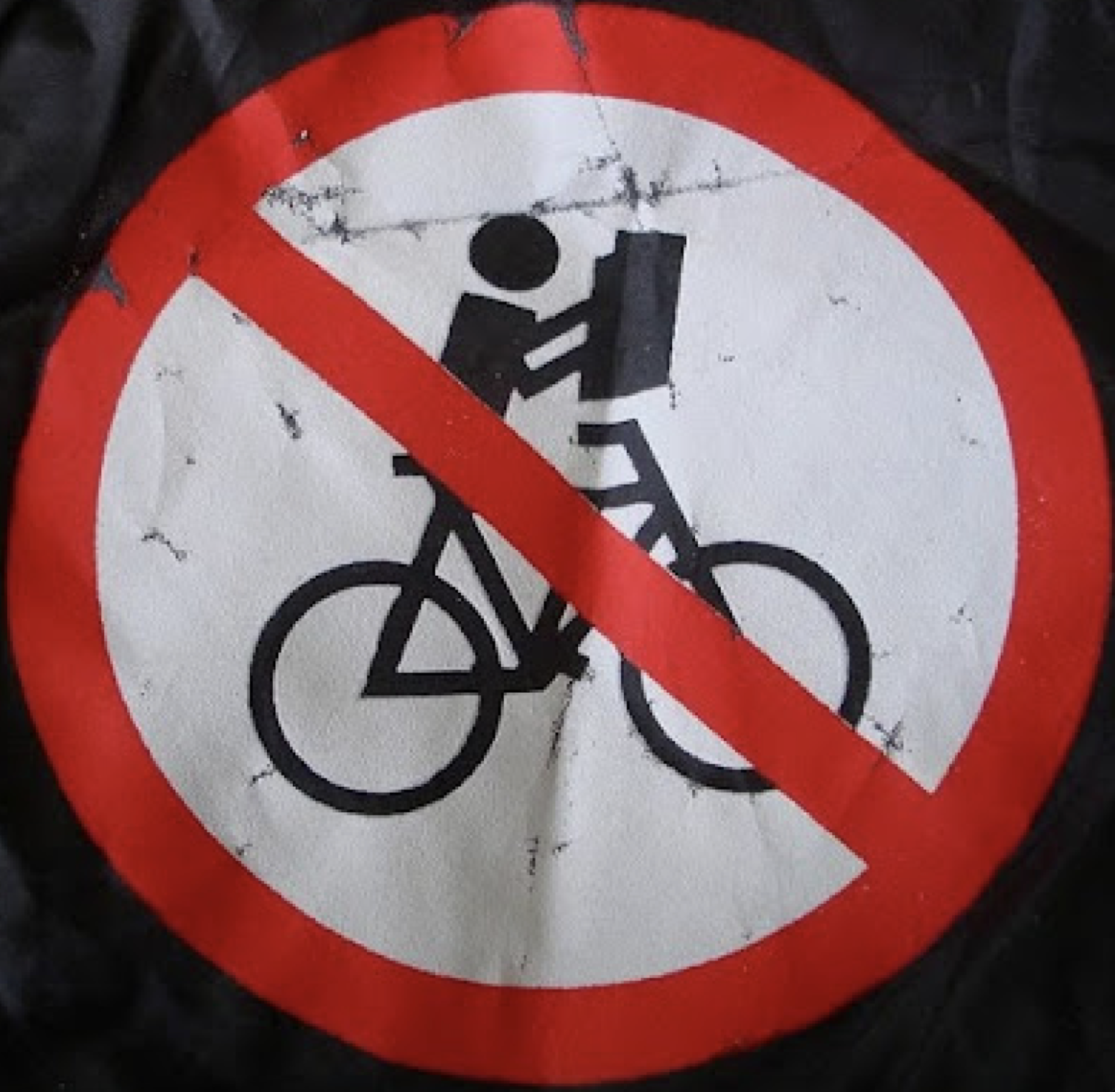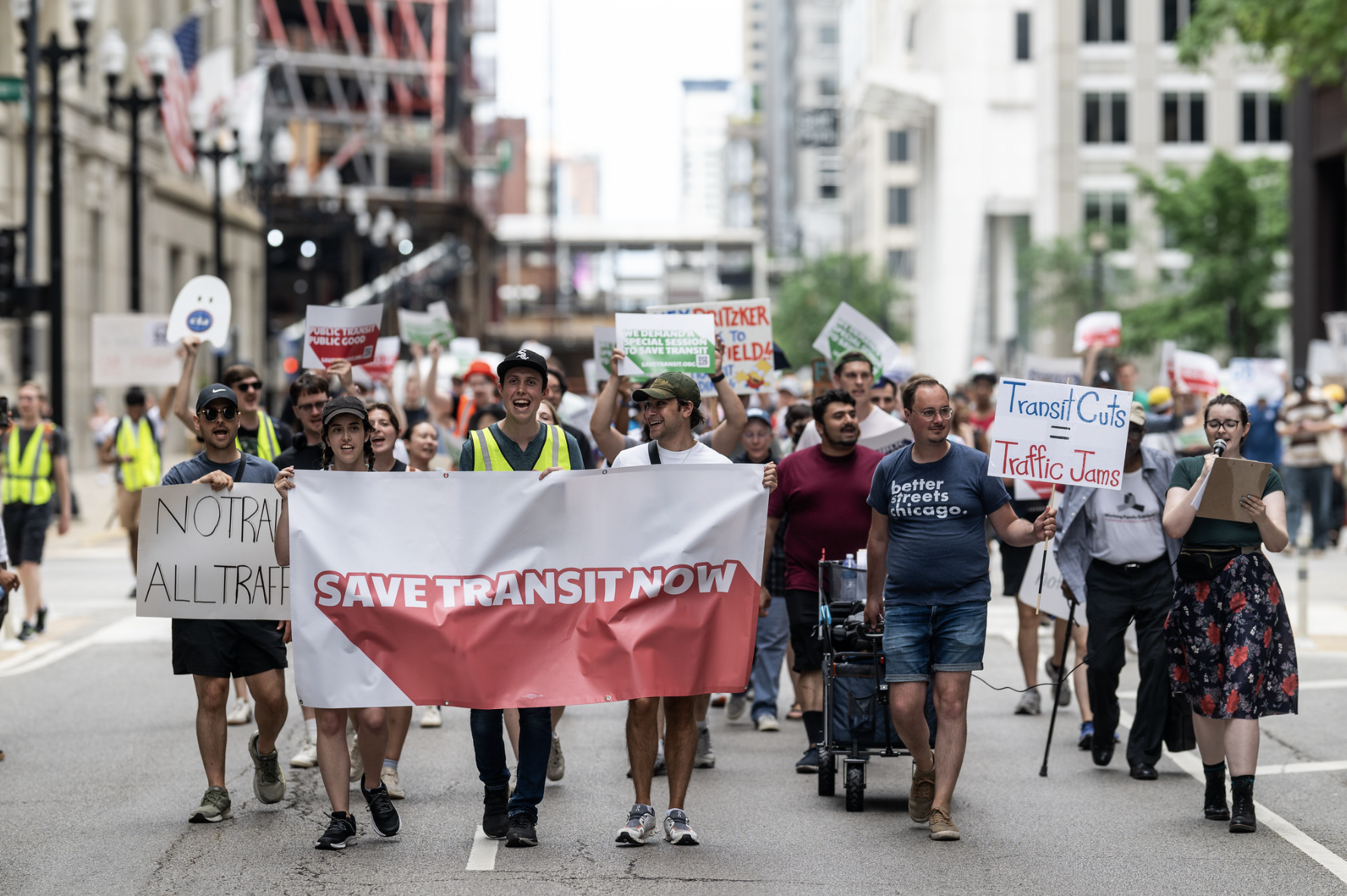Today local leaders gathered to discuss the potential for new development near transit stations to have a positive influence on racial equity, resiliency, health, arts, and culture in Chicago neighborhoods at the symposium “A Catalytic Moment: The Transformative Power of Transit-Oriented Development."
The event was put on by the affordable housing nonprofit Enterprise Community Partners and Elevated Chicago. The latter is a project of the Strong, Prosperous, And Resilient Communities Challenge (a $90 million initiative that funds equity efforts in six cities across the country) that is supported by Enterprise, The Chicago Community Trust charitable foundation, and other funding organizations, and is housed by The Trust. Elevated Chicago brings together a wide range of community organizations to brainstorm ways to turn the areas around CTA and Metra stations into “hubs of opportunity and connection across our region’s vast transit system.”
Some of the panel topics at the conference included “Health and the Arts: censpectives on Building Healthy Communities,” “Investing in Communities for Impact,” “What’s eTOD? Understanding the Spectrum of Equitable Transit-Oriented Development,” “Incubation, Innovation… Disruption,” and “What Is Resiliency? A Conversation on Social Networks, Economic Opportunities, and Climate.”
I attended the session “Who Stays, Who Goes? Addressing Displacement in Communities of Color.” There’s increasing awareness of how transportation-related investments in neighborhoods, like new train stations, TODs, and trails, increase property values, property taxes, and rents, which can speed up the process of lower-income and working-class people being priced out of gentrifying neighborhoods. As such, residents are calling for the city to be proactive about preserving affordability before this unintended (or, some would argue, intended) consequence takes place.
The panel, moderated by the Metropolitan Planning Council’s Marisa Novara, included professionals who address issues of displacement from a wide range of perspectives. Geoff Smith, executive director of DePaul University’s Institute for Housing Studies, talked about Chicago’s changing demographics in recent years, including an influx of affluent whites, as well as working-class Latino and Asian immigrants, but a sharp decrease in the number of lower-income Black households.
(Novara also noted that there have been dramatic demographic changes in some gentrifying neighborhoods. From 2000 to 2013 Pilsen saw its white population increase by 22 percent while the Latino population dropped by 26 percent. The change has been even more pronounced in Logan Square, where the white population grew by 44 percent during that time while the Latino population fell by 35 percent.)
Tyrrone Stoudemire, global vice president of diversity and inclusion at Hyatt Worldwide, talked about how issues of housing affordability and immigration policy are presenting a challenge for the hotel industry. Stoudemire said it’s becoming increasingly difficult for employees like housekeepers, door people, and restaurant workers to find housing in gentrifying cities. He added that the Trump administration’s chilling effect on immigration is a problem for a hotel chain where 70 percent of housekeepers are Latino.
Krysta Pates is the Midwest Director with Community Reinvestment Fund USA, which provides loans to residents of underserved communities. She discussed her work directing the organization’s Detroit home mortgage program, which helps address the issue of “appraisal gaps.” Houses in distressed areas tend to be undervalued by banks, which make it difficult for homebuyers to get loans, which is why the majority of house sales in Detroit are cash transactions, Pates said. “In two years we’ve almost doubled the amount of mortgages in our market. It’s very important to us that people of color are kept at the center of everything we do.”
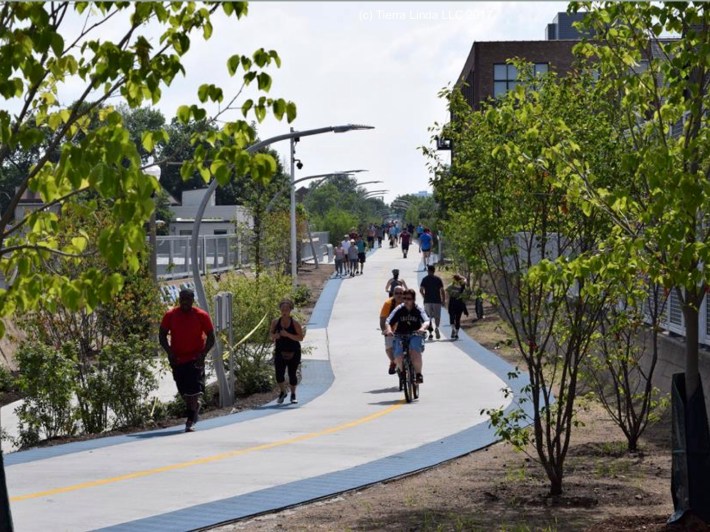
Since Streetsblog Chicago is a transportation news and advocacy website, Juan Carlos Linares’ presentation was especially relevant to what we cover. He’s the executive director of Latin United Community Housing Association, a Humboldt Park-based affordable housing nonprofit that has been active in efforts to fight displacement in the area around the Bloomingale Trail, aka The 606. While this part of town was already gentrifying well before the elevated rails-to-trails opened in June 2015, a report from DePaul's Institute for Housing Studies found that property values along the western stretch of trail have gone up by 48.2 percent since construction began on the greenway.
“The 606 is a great amenity,” Linares said. He noted that, along with the Logan Square Neighborhood Association, LUCHA was a longtime advocate for building the trail. “So when we talked to the mayor’s office about [strategies to maintain affordability] way back in the day, they actually started to open up to us, but by then the plans were already in place... So our vision is to advance housing as a human right. Affordable housing is one way to manifest that.”
LUCHA decided that the best to have some leverage as the area around the trail changed was to buy up land themselves. “So back in 2011 or 2012 we bought six private lots for about $130,000 each, which at the time was kind of cheap – we could flip them now for twice that.” Local aldermen negotiated the donation of six additional city lots. Construction is currently underway on the Tierra Linda (“Beautiful Land”) development with 45 homes, including one-, two-, and three-bedroom units that will rent for $614 to $1,055, which will be affordable to households making less than 50 percent of the Chicago area median income (AMI).
LUCHA’s second strategy is legislation. Along with other affordable housing groups and the local aldermen, they’re pushing for the Pilot Act for the Preservation of Affordable Housing in the 606 Residential Area, which would charge an additional fee of between $300,000 and $650,000 for teardowns, as well as a fee for enlarging existing buildings, which would be used to fund affordable housing in the area. The ordinance was introduced to City Council in May.
“So what happened is politics, right?” Linares said. Some alderman weren’t keen on the idea of charging additional fees to developers, a key source of campaign contributions, and there were indications that Mayor Rahm Emanuel didn’t support the new law either. Instead, in October the Council passed two other ordinances with the stated goal goal of increasing the amount of affordable housing in gentrifying areas on the West and Near Northwest sides.
However, Linares says these ordinances essentially formalize the policies that aldermen in these areas were already doing, requiring developers to include on-site affordable units before a zoning change will be approved. And while the city’s 2015 affordable housing ordinance requires that these affordable rental units be within the means of households earning up to 60 percent of the region's area mean income, the new legislation makes households that earn up to 80 percent of the area mean, or $50,600, eligible for the affordable units.
“But our median income for Humboldt Park is 50 percent of the larger Chicago area median, so the people that we serve can’t afford those rents in the first place,” he said. Meanwhile, nine months later, the 606 affordability ordinance is still languishing in City Council, but LUCHA is continuing to advocate for it.
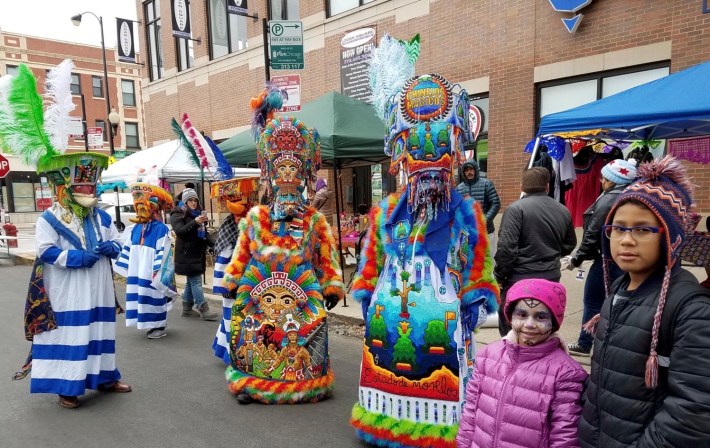
Linares says the group’s third strategy to fight displacement in the area is leveraging resources from Elevated Chicago and SPARCC. For example, they used some of this funding to hold the “Faces of Logan Square” celebration of Latino culture in October at the Spaulding entrance of the Logan Square Blue Line stop, including dancers in traditional costumes, music, crafts, food, and even a “crazy Zumba flash mob.”
“The event bridged cultures,” Linares said. “We had both the Latinos who are being displaced and the newer, whiter residents who were like, ‘This is great, this is why we moved here in the first place.’ So we’re creating ambassadors of others, letting them know what the issues are, and saying, hey, be a part of the solution with us.”
